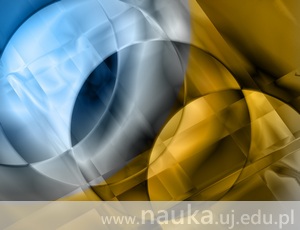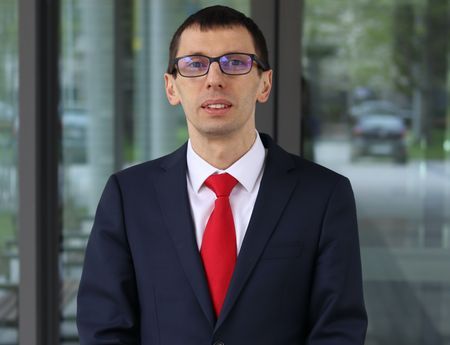
The concept of time crystals sounds like something straight from a science fiction novel. You couldn’t be more wrong. Quantum time crystals have already been created at the laboratories of the University of Maryland and Harvard University. Their existence was earlier predicted by Prof. Krzysztof Sacha from the Jagiellonian University.
In order to explain what time crystals are, it is necessary to refer to the characteristics of “standard” crystals. They are created when interactions between atoms lead to their self-organisation and the consequent formation of structures in space. To put it in the simplest possible way, such a spatial crystal (as opposed to time crystal) is a structure made of regularly arranged atoms. It resembles the well-known bubble wrap, which consists of a regular network of bubbles. So how can a time crystal be described? It’s a structure that spontaneously repeats the same arrangement of its elements in time, instead of space.
Atom “nudging”
The origins of the idea of time crystals date back to 2012. It was then when the Nobel laureate Frank Wilczek came to a conclusion that the laws of physics should allow them to exist. According to Wilczek’s original idea, there exist systems of many bodies in the lowest energy state, which, as a result of mutual interaction, spontaneously start to perform a periodic motion, i.e. a motion which recurs in regular intervals, like that of a clock pendulum. It soon turned out to be impossible. Yet, Wilczek’s suggestion inspired further research in that area. From its very beginning, the idea of time crystals has attracted interest among scientists from the Jagiellonian University Faculty of Physics, Astronomy and Applied Computer Science.
 The problem with the original Wilczek’s idea is that if a system of many bodies in the lowest energy state is created, they cannot spontaneously set themselves in periodic motion. In 2015 it turned out that the temporal self-organisation can also be observed in systems that from the very beginning are subject to a periodic force, that is a force which is repeated in regular intervals. Prof. Krzysztof Sacha showed that this happens when two clouds of ultracold atoms alternately bounce off a regularly vibrating surface (fig. 1). If the interaction between atoms is weak, nothing interesting can be observed. The situation changes when the interaction becomes sufficiently strong. At this point something amazing happens: a very special quantum state of many bodies, which is very sensitive to any disturbance, is created. In such case, it is enough to “nudge” one atom to make one cloud disappear and cause other atoms to move with a period twice as long as the surface oscillation period (fig. 2). What happens is the so-called “temporal discrete self-organisation” and voila! Here is a discrete time crystal!
The problem with the original Wilczek’s idea is that if a system of many bodies in the lowest energy state is created, they cannot spontaneously set themselves in periodic motion. In 2015 it turned out that the temporal self-organisation can also be observed in systems that from the very beginning are subject to a periodic force, that is a force which is repeated in regular intervals. Prof. Krzysztof Sacha showed that this happens when two clouds of ultracold atoms alternately bounce off a regularly vibrating surface (fig. 1). If the interaction between atoms is weak, nothing interesting can be observed. The situation changes when the interaction becomes sufficiently strong. At this point something amazing happens: a very special quantum state of many bodies, which is very sensitive to any disturbance, is created. In such case, it is enough to “nudge” one atom to make one cloud disappear and cause other atoms to move with a period twice as long as the surface oscillation period (fig. 2). What happens is the so-called “temporal discrete self-organisation” and voila! Here is a discrete time crystal!
Gateway to the future
One year later, in 2016, new ideas were independently presented by other groups of researchers, who have noticed that discrete time crystals can be achieved in groups of atoms with correlated spins. Such experiments were carried out in two American laboratories, and the results, demonstrating the intriguing state named “a matter of time”, were published in the prestigious journal Nature.
How can time crystals possibly be used? They might be applied in experiments aimed at solving selected problems from the field of quantum information science. The latest discoveries gave birth to a brand new area of time crystal research: modeling crystal behaviour in the temporal domain. It turns out that phenomena known from spatial crystal physics can also be observed in the temporal domain, and the research team of Prof. Sacha from the Jagiellonian University carries out pioneering studies in that area. It is already known that time crystals, similarly to spatial crystals, can be isolators or conductors. Hence, it becomes possible to build new quantum simulators – systems that model other systems, which are more difficult to test in experiments.





